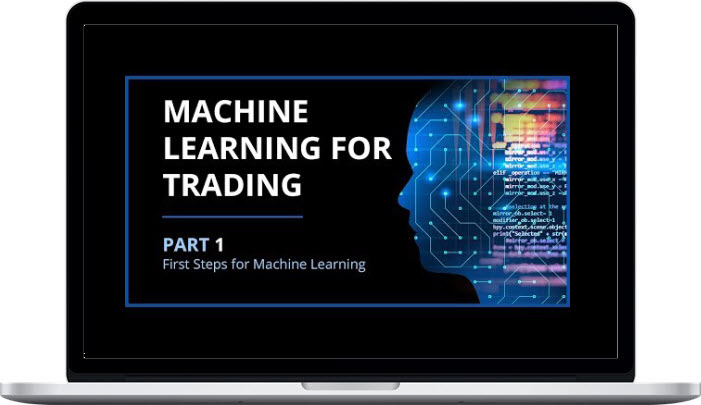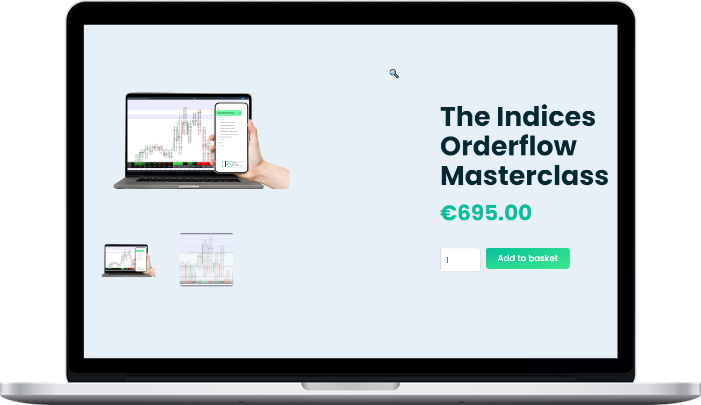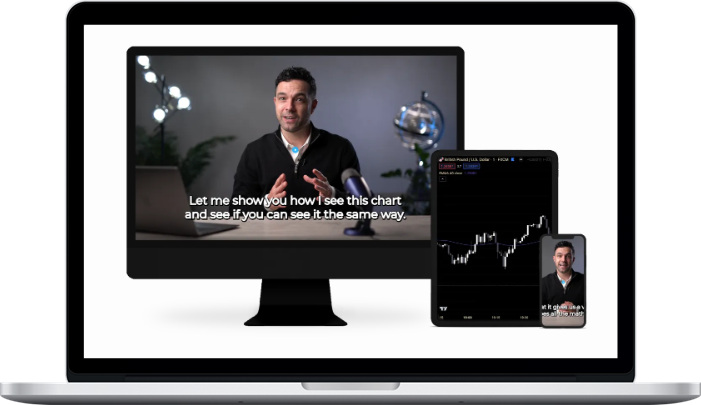Quant Trading – Machine Learning
Description of Machine Learning
Play the Markets Like a Pro by Integrating Machine Learning into Your Investment Strategies! This online training course takes a completely practical approach to applying Machine Learning techniques to Quant Trading. The focus is on practically applying Machine Learning techniques to develop sophisticated Quant Trading models. From setting up your own historical price database in MySQL, to writing hundreds of lines of Python code, the focus is on doing from the get-go.
Financial markets are fickle beasts that can be extremely difficult to navigate for the average investor. This Quant Trading Using Machine Learning course will introduce you to machine learning, a field of study that gives computers the ability to learn without being explicitly programmed, while teaching you how to apply these techniques to quantitative trading. Using Python libraries, you will discover how to build sophisticated financial models that will better inform your investing decisions. Supplemental Material included!
What will you learn in Machine Learning?
INTRODUCTION
- You, This Course, and Us!
DEVELOPING TRADING STRATEGIES IN EXCEL
- Are markets efficient or inefficient?
- Momentum Investing
- Mean Reversion
- Evaluating Trading Strategies – Risk and Return
- Evaluating Trading Strategies – The Sharpe Ratio
- The 2 Step process – Modeling and Backtesting
- Developing a Trading Strategy in Excel
SETTING UP YOUR DEVELOPMENT ENVIRONMENT
- Installing Anaconda for Python
- Installing Pycharm – a Python IDE
- MySQL Introduced and Installed – Mac OS X
- MySQL Server Configuration and MySQL Workbench – Mac OS X
- MySQL Installation – Windows
- For Linux-Mac OS Shell Newbies – Path and Other Environment Variables
SETTING UP A PRICE DATABASE
- Programmatically Downloading Historical Price Data
- Code Along – Downloading Price Data from Yahoo Finance
- Code Along – Downloading a URL in Python
- Code Along – Downloading Price Data from the NSE
- Code Along – Unzip and Process the Downloaded Files
- Manually download data for 10 years
- Code Along – Download Historical Data for 10 years
- Inserting the Downloaded Files into a Database
- Code Along – Bulk Loading Downloaded Files into MySQL Tables
- Data Preparation
- Code Along – Data Preparation
- Adjusting for Corporate Actions
- Code Along – Adjusting for Corporate Actions 1
- Code Along – Adjusting for Corporate Actions 2
- Code Along – Inserting Index Prices into MySQL
- Code Along – Constructing a Calendar Features Table in MySQL
DECISION TREES, ENSEMBLE LEARNING AND RANDOM FORESTS
- Planting the seed – What are Decision Trees
- Growing the Tree – Decision Tree Learning
- Branching out – Information Gain
- Decision Tree Algorithms
- Overfitting – The Bane of Machine Learning
- Overfitting Continued
- Cross-Validation
- Regularization
- The Wisdom of Crowds – Ensemble Learning
- Ensemble Learning continued – Bagging, Boosting and Stacking
- Random Forests – Much More Than Trees
A TRADING STRATEGY AS MACHINE LEARNING CLASSIFICATION
- Defining the Problem – Machine Learning Classification
FEATURE ENGINEERING
- Know the basics – A Pandas tutorial
- Code Along – Fetching Data from MySQL
- Code Along – Constructing Some Simple Features
- Code Along – Constructing a Momentum Feature
- Code Along – Constructing a Jump Feature
- Code Along – Assigning Labels
- Code Along – Putting It All Together
- Code Along – Include Support Features from Other Tickers
ENGINEERING A COMPLEX FEATURE – A CATEGORICAL VARIABLE WITH PAST TRENDS
- Engineering a Categorical Variable
- Code Along – Engineering a Categorical Variable
BUILDING A MACHINE LEARNING CLASSIFIER IN PYTHON
- Introducing Scikit-Learn
- Introducing RandomForestClassifier
- Training and Testing a Machine Learning Classifier
- Compare Results from Different Strategies
- Using Class Probabilities for Predictions
NEAREST NEIGHBORS CLASSIFIER
- A Nearest Neighbors Classifier
- Code Along – A Nearest Neighbors Classifier
GRADIENT BOOSTED TREES
- What are Gradient Boosted Trees
- Introducing XGBoost – A Python Library for GBT
- Code Along – Parameter Tuning for Gradient Boosted Classifiers
INTRODUCTION TO QUANT TRADING
- Financial Markets – Who Are the Players
- What is a Stock Market Index
- The Mechanics of Trading – Long Vs Short Positions
- Futures Contracts
More courses from the same author: Quant Trading









